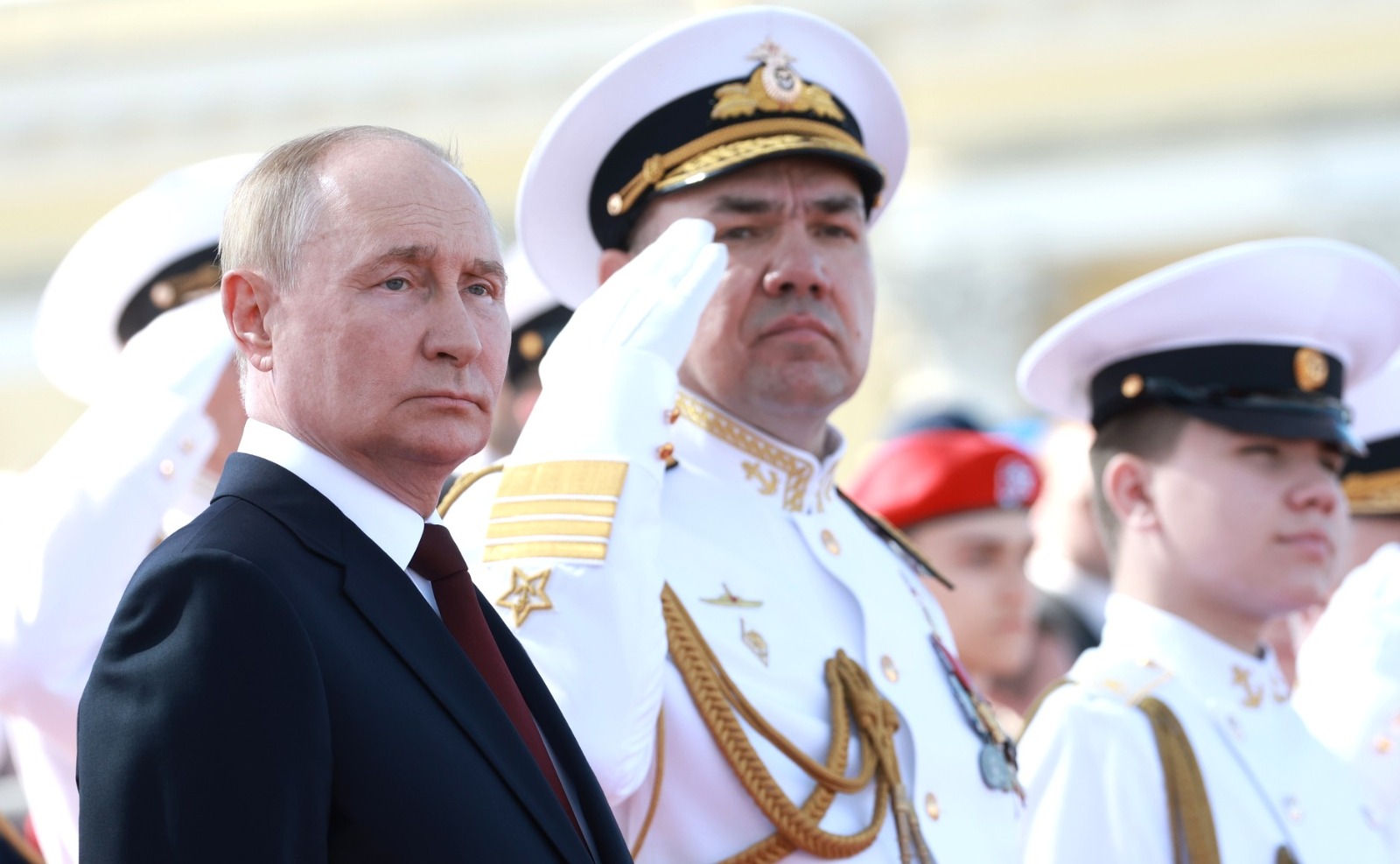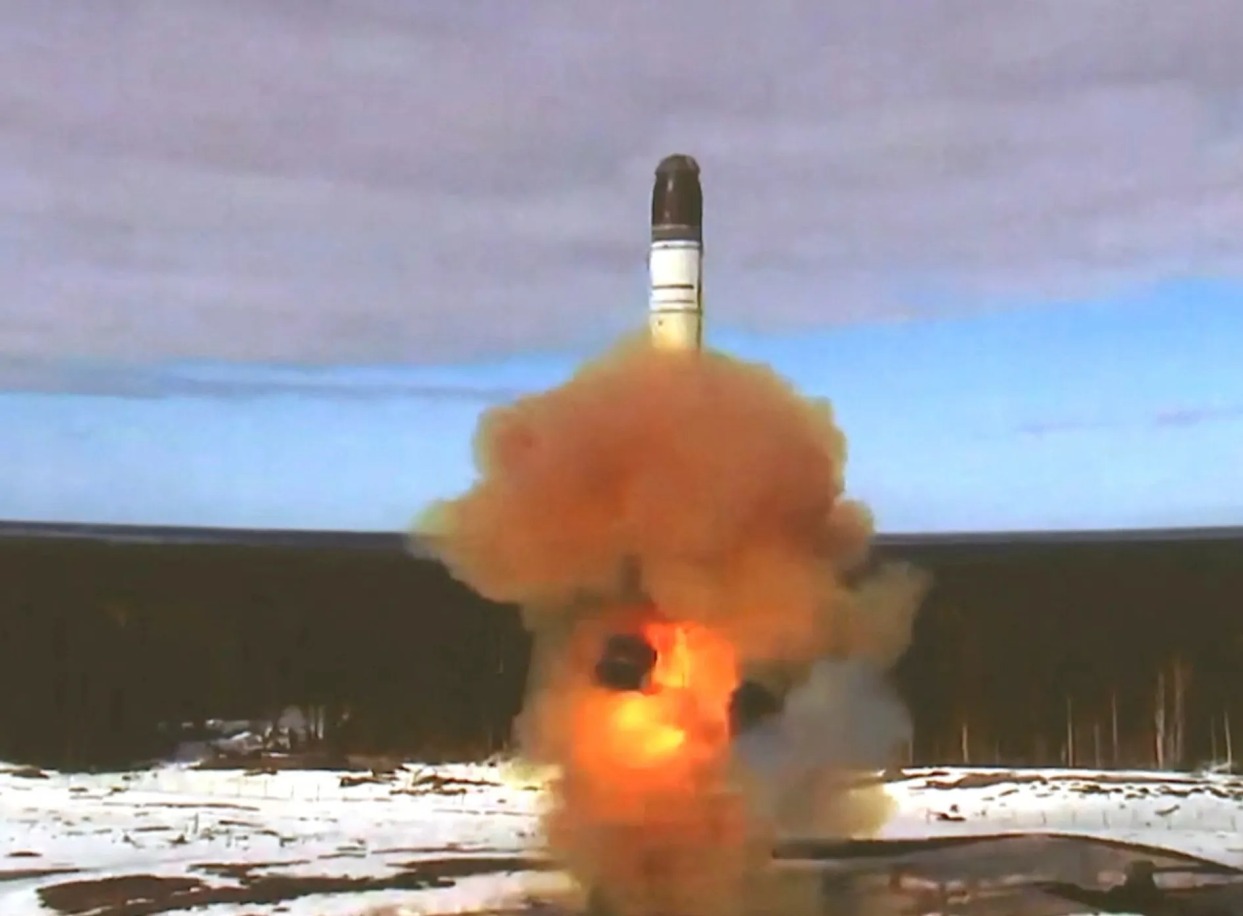In the shadow of escalating geopolitical tensions, the world finds itself at a critical juncture in nuclear arms control and proliferation.
“I can declare my hope from the bottom of my heart that one day we will see the number of nuclear weapons reduced to zero, and the world will be a much better place.” Former US Chairman of the Joint Chiefs of Staff, Gen. Colin Powell, once expressed his heartfelt hope. While his vision of a nuclear-free world was idealistic, achieving this in today’s geopolitical landscape seems increasingly challenging.
On the morning of September 25, 2024, Russian President Vladimir Putin delivered a chilling address to his Security Council, warning the West that any aggression against Russia by a non-nuclear state, if backed by a nuclear power, would be considered a “joint attack” on Russia. He emphasized Russia’s right to use all necessary means to defend its sovereignty.
Interestingly, on that same day, China tested a nuclear-capable ICBM in the Pacific Ocean—its first such test outside its borders in over 40 years.
Shifting Doctrines: A Move Beyond MAD
In stark contrast to the Cold War-era doctrine of Mutually Assured Destruction (MAD), where the threat of total annihilation kept nuclear powers in check, Vladimir Putin has declared a new and unsettling set of rules for nuclear engagement.
Under MAD, the principle was simple: any nuclear attack by one superpower would trigger a massive counterattack, ensuring mutual destruction, thus deterring both sides from using their arsenals.
Putin’s recent declaration, however, marks a significant shift in Russia’s military doctrine.
He stated that Russia would now treat an attack from a non-nuclear state, if supported by a nuclear-armed power, as a “joint attack,” suggesting that even indirect involvement from nuclear powers could escalate a nuclear response. This stance appears to widen the circumstances under which Russia might use its nuclear arsenal, particularly in conflicts like the ongoing war in Ukraine.
The timing of this announcement is no coincidence. The UK and the US have been considering allowing Ukraine, a non-nuclear state, to use conventional missiles against Russian military targets—actions that have heightened Moscow’s concerns.
With Kyiv seeking approval to use long-range Western missiles and Ukrainian President Volodymyr Zelensky meeting with US President Joe Biden to discuss these requests, Putin’s warning casts a long shadow over the proceedings.
This new ambiguity in Russia’s nuclear doctrine raises the stakes in global geopolitics. Unlike the clearer boundaries set by MAD, where direct nuclear exchanges were the primary concern, Putin’s stance suggests that even proxy wars or indirect confrontations could now risk nuclear escalation.
The clarity and transparency once provided by MAD are fading as the lines between conventional and nuclear warfare blur, creating a more unpredictable and dangerous landscape.

The Uncertain Future Of New START
The New START (Strategic Arms Reduction Treaty) remains the last major arms control agreement between Russia and the United States, but its future is uncertain.
Over the past few years, both nations have pulled out of several key arms treaties, leaving New START—set to expire in 2026—as the sole remaining pact.
Russia recently announced it was suspending its participation in the treaty, which limits the number of nuclear warheads, launchers, and bombers each country can deploy. While Moscow has pledged to adhere to the treaty’s limits, for now, the suspension raises concerns about its long-term commitment.
In 2022, Russia halted US on-site inspections under New START, citing difficulties related to Western sanctions and the COVID-19 pandemic. According to Russia, it was difficult for Russia to carry out inspections on American soil due to Western sanctions, including the closure of airspace for Russian planes and visa restrictions.
New START, which took effect on February 5, 2011, was designed to cap each country’s nuclear arsenal at 1,550 warheads and 700 strategic launchers, including intercontinental ballistic missiles (ICBMs), submarine-launched ballistic missiles (SLBMs), and heavy bombers. Originally set to last ten years, the treaty was extended in 2021 for an additional five years, pushing its expiration to 2026.
If the treaty expires without a replacement, it would mark the first time in over three decades that the two largest nuclear powers operate without formal restrictions on their arsenals, heightening the risk of a renewed arms race.

Nuclear Arsenal Among Superpowers
During the Cold War, the Soviet Union amassed approximately 40,000 nuclear warheads, while the United States held around 30,000. Although treaties and regulations have altered the nuclear landscape, the dominance of these superpowers persists.
According to a June 2024 report from the Stockholm International Peace Research Institute (SIPRI), the nine nuclear-armed nations—the US, Russia, the UK, France, China, India, Pakistan, North Korea, and Israel—are modernizing their arsenals.
In 2023 alone, several countries deployed new nuclear-armed or nuclear-capable systems. As of January 2024, the global inventory is estimated at 12,121 warheads, with around 9,585 held in military stockpiles for potential use. Notably, Russia and the US account for nearly 90% of the world’s nuclear weapons.
Russia, having inherited the Soviet Union’s nuclear stockpile, possesses the largest collection of warheads globally, with President Putin overseeing approximately 5,580. Of these, around 1,200 are retired but remain largely intact, while approximately 4,380 are earmarked for operational forces.
The US follows closely, with a nuclear inventory of 5,044 warheads. According to SIPRI, about 1,336 of these are retired but intact, with roughly 3,708 stockpiled for operational use.
In addition to the US and Russia, China is significantly expanding its nuclear capabilities. The estimated size of China’s nuclear arsenal increased from 410 warheads in January 2023 to 500 in January 2024, with expectations for further growth. Notably, China may now be deploying a limited number of warheads on missiles during peacetime for the first time.
Hans M. Kristensen, Director of the Nuclear Information Project at the Federation of American Scientists (FAS), remarked, “China is expanding its nuclear arsenal faster than any other country.”
Nuclear Testing: A Resurgence of Tensions
Recent developments suggest a possible resurgence in nuclear testing and weapons development. Satellite imagery has revealed preparations at Russia’s northern nuclear test site on Novaya Zemlya, including the construction of new tunnels.
This activity, coupled with advancements in Russia’s nuclear-powered cruise missile program, signals a potential return to nuclear testing.
Meanwhile, China’s recent long-range test-firing of an intercontinental ballistic missile (ICBM) into international waters has raised alarms and drawn protests from neighboring countries. This test underscores China’s rapidly expanding nuclear capabilities.
The US issued warnings last year regarding China’s expanding nuclear arsenal as part of its defense modernization efforts. In July 2024, China responded to ongoing US arms sales to Taiwan by suspending its nuclear arms control talks with Washington, further escalating tensions in the region.
The Pentagon estimates that China has over 500 operational nuclear warheads, with approximately 350 being intercontinental ballistic missiles (ICBMs). Projections indicate that China could exceed 1,000 warheads by 2030.
A New Era Of Nuclear Risk
While the total number of nuclear warheads worldwide has decreased as Cold War-era weapons are dismantled, there is a concerning trend of increasing operational nuclear arsenals year on year.
As geopolitical tensions rise and the framework for arms control becomes more uncertain, the risk of escalation—both nuclear and conventional—remains alarmingly high. The hope for a nuclear-free world faces unprecedented challenges in this rapidly changing landscape.
The blurring of lines between conventional and nuclear warfare, the expansion of nuclear arsenals, and the potential resumption of nuclear testing all contribute to a more unpredictable and dangerous world.
- Shubhangi Palve is a defense and aerospace journalist. Before joining the EurAsian Times, she worked for E.T. Prime. In this capacity, she focused on covering defense strategies and the defense sector from a financial perspective. She offers over 15 years of extensive experience in the media industry, spanning print, electronic, and online domains.
- Contact the author at shubhapalve (at) gmail.com




